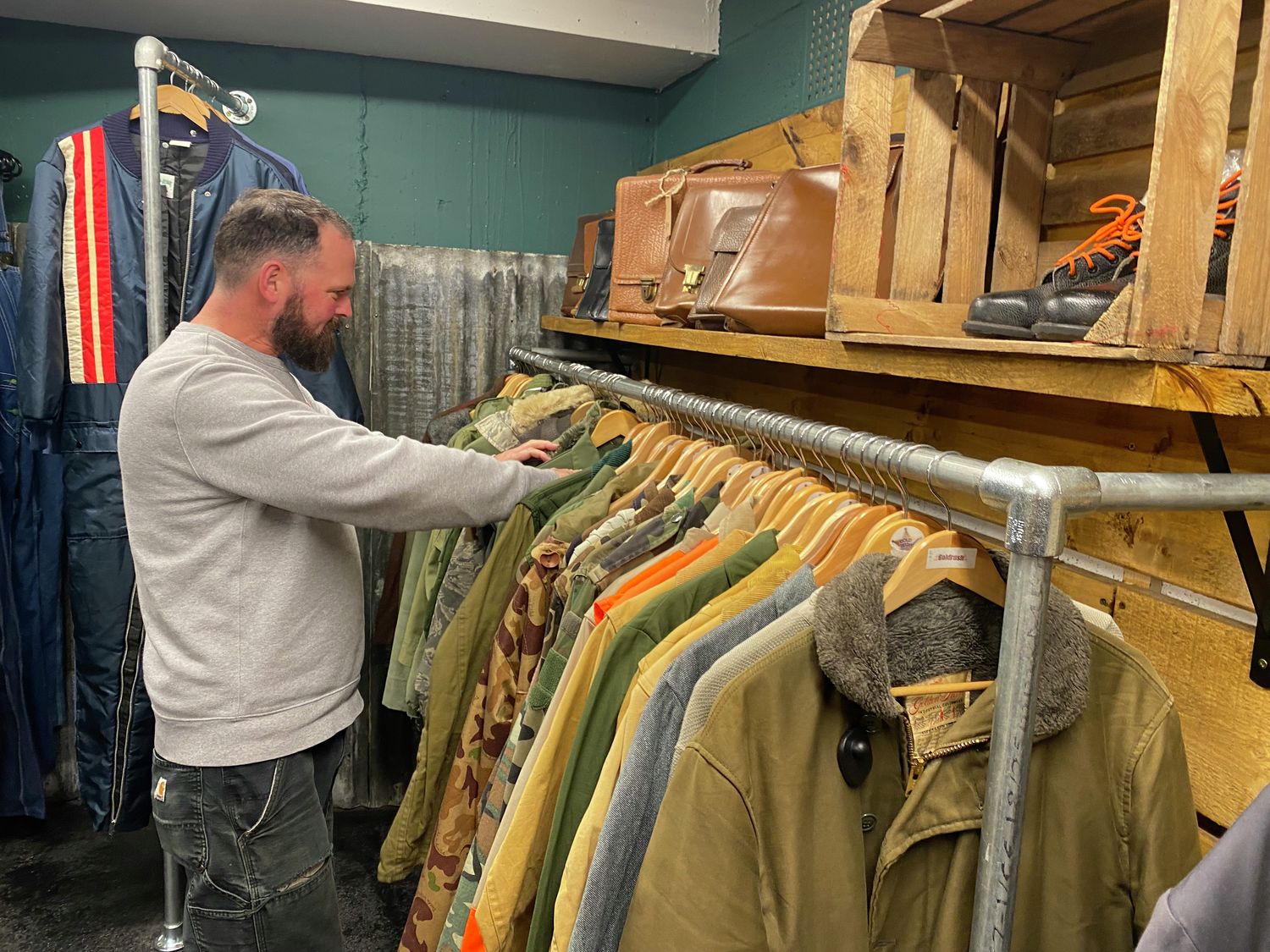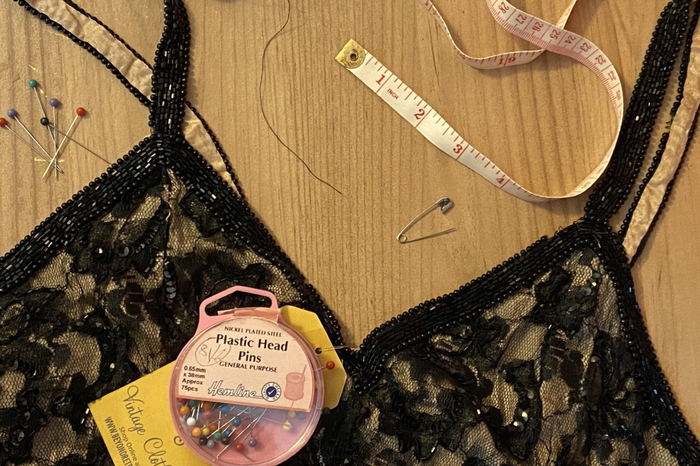After the horrors of Week 5, there’s nothing like a bit of retail therapy. When the sun’s already setting on your post-supo trek to Mainsburys, Goldrush Vintage’s glowing storefront display is more tempting than ever (and more of a threat to my dwindling bank balance!). I spoke to Goldrush’s manager, Dave, about what goes on behind the scenes.
“When I started, if you wore vintage or second-hand clothes, you were a little bit alternative. Now it doesn’t seem to be like that anymore”
“We opened here last December, so we’re nearly a year old now. And, yeah, it’s going good.” Dave tells me he’s been in the vintage business for over 25 years now, which he jokes is “too long”. Starting on London’s Portobello Road, he moved to Camden Town before finally settling in Cambridge, where business is thriving. “When I started, if you wore vintage or second-hand clothes, you were a little bit alternative. You were a little bit out there. You know? Now it doesn’t seem to be like that anymore”.
When I ask what kind of vintage pieces he sells most often, Dave doesn’t hesitate in telling me, “it’s probably anything Carhartt”. The rail of jackets beside us is a treasure-trove of suede, leather, and wool, perfect for the winter weather. As I mention the seasonal wardrobe shift, Dave tells me “knitwear does really well in this shop which is quite surprising because other places I’ve been to, not so much, but Cambridge folk like proper knitwear […] that you wouldn’t necessarily associate with students or young people”.
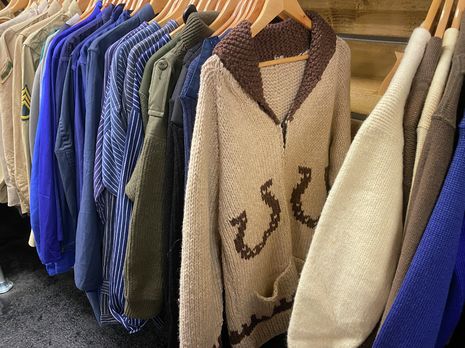
It seems that the majority of customers are students, though Dave tells me this is actually only by a small margin. “We get a lot of regular people that just… like the whole vintage selling thing. It’s just like, oh, it’s a Ralph Lauren shirt. It’s 15 quid. Why wouldn’t I?” — the joys of a good bargain are evidently universal, we laugh. Goldrush certainly knows a thing or two about the joys of thrift finds; you need only see the staff wardrobes to recognise this. “My absolute favourite piece is a genuine 1977 Sex Pistols T-Shirt […] rare as hen’s teeth”, which Dave scored for just “a fiver”.
He reveals the shop is similarly a hit with school pupils and “exchange students” from France and Germany, smiling when he says that it’s nice to see “youngsters” appreciating all things vintage. It’s clear that Dave and his team value customers greatly and are always looking for the best finds for shoppers. When I ask where Goldrush sources their incredible variety of stock, the answer surprises me: it’s mostly from the States. Dave explains how 75% of stock comes from across the Atlantic, and then “we get some of the sportswear from mainland Europe, Holland mainly… track tops, track pants. There’s European workwear as well, which is completely different to the sort of American Carhartt”. Dave looks to trends for his pricing, buying in bulk and seeking out the hidden gems: “in that mix of work jackets, about a hundred work jackets, 10 are going to be Carhartt… the rest sell very well as well, but not for anywhere near as much. So you kind of have to, you know, get that little bit extra the way you can.”
“So what they’re selling in Sweden now, this time next year, we’ll be selling it here.”
Though it seems to me that Dave is an expert in his field by now, when I ask if he’s able to predict next season’s trends based on consumer habits, he’s bashful in admitting “I don’t necessarily spend my time looking at styles or fashion or that sort of thing” on social media, so can’t divulge much! Joking about screen time, Dave moves on to tell me that social media is far from the all-powerful style oracle: “one of my biggest suppliers has got a few shops around the place, and he’s got one in Sweden. And, he’s done it twice as long as I have. So I take a little bit of advice from him, and he always says Sweden is ahead of the curve. So what they’re selling in Sweden now, this time next year, we’ll be selling it here.” Despite the insider intel, Dave admits “it’s really difficult. I’ve done it or I’ve tried it before where you think you know what’s coming and you jump on it and you’re too early and it just doesn’t work”, citing the Carhartt jackets he’s been selling since the nineties, which only saw a boom post-lockdown.
“It’s things like this, just actual vintage. You know, somebody wore that to school in 1979”
Dave tells me that jackets are by far his favourite thing to sell, bringing me over to a rail bursting with history: “if the shop could be filled with this, happy days. I would love it”. The pull of these items seems unquestionable, “the thing is that it’s things like this, just actual vintage. You know, somebody wore that to school in 1979. So, I was 2”, Dave remarks, yet surprisingly reveals “this doesn’t sell. Sold one of these today, but that’s the only one I think sold this week”. We look at German fishermen’s jackets, army apparel from Korea, Vietnam, and the Second World War. The rails are heavy with history, which Dave explains makes them all the more special: “the pattern’s called Cowichan” he says, as we look at a beautiful horseshoe print cardigan which owes its pattern to “traditional Native American” culture.
Dave is tireless in his research of clothes’ history, though divulges that nowadays, technology is offering a helping hand: “thanks to Google Lens, you don’t have to buy all the books anymore. You just snapshot it, and it tells you what it is. So that was quite interesting”. Technology holds a surprising place in the future of something so nestled in the past, and Dave is privy to the future of online shopping (spoiler alert: Vinted has new competition). Whatnot, Dave tells me, is “an American thing, and they’ve not long launched over here, and it’s livestream selling. You can start at whatever price you want, but it’s more like an auction. Fifteen seconds. And then if somebody bids, it goes up ten seconds. […] I’ve not done one yet, but we’re going to go live with that very soon.”
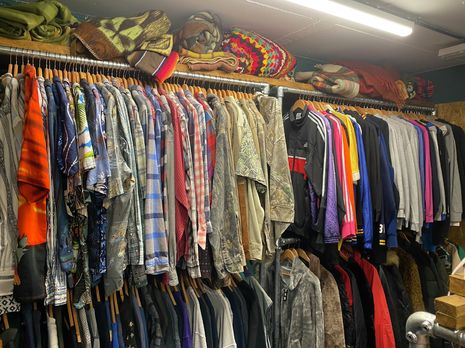
On the topic of the store’s future, I wryly ask Dave about the newly sprung-up competition in Cambridge. He’s humble and laughs in response, “I’m fairly new myself so I can’t get too possessive!” Speaking of large-scale chains, and the “big boys”, he admits “they’ve got a big budget, which I don’t necessarily. But no, since they opened it, to be honest, it’s been as good as ever”. There’s something about the appeal of a smaller business which we both agree on.
Sustainability, for instance, is always at the forefront of Goldrush’s mind. Dave tells me that “we get very little waste in the sense of damaged product”, which accounts for around 5% of stock. Modern clothes also find their way into vintage stock bundles, which don’t sell as well. Dave puts brands like Zara, H&M and ASOS on marked-down sale rails (“it’s too good to throw away”) and reveals a further secret in the shop’s ethical sustainability: “we do donate quite a bit as well. We’ve worked with charities in Gambia”.
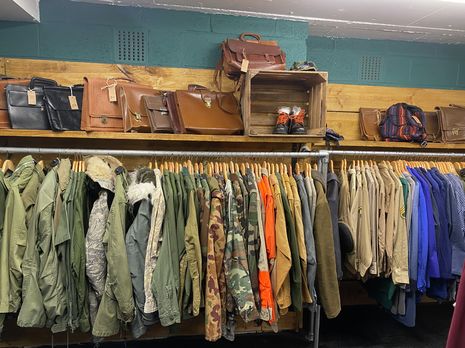
My final question to him is about any extra secrets of the vintage store he’s willing to share: “I would say that one of the things we do that — I’m not saying the others don’t — but a lot of vintage stores don’t launder everything. […] If it can be laundered, it’s laundered. If it can’t, such as leather or suede, it’s hand cleaned.” He’s keen to make sure the “loft style” smell of vintage shops is replaced with cleanliness in Goldrush, and certifies every item is top quality.
Dave’s parting words to me are emphatic of the energy he puts into selling vintage: “if you were looking for a tracksuit top today, you went through all of them and you thought, you know, ‘there’s not one I quite like. I’ll go and check again next week or the week after.’ I want them all to be different”. There’s something for everyone to be found on the rails at Goldrush Vintage.

